Roman relics unearthed during car park construction
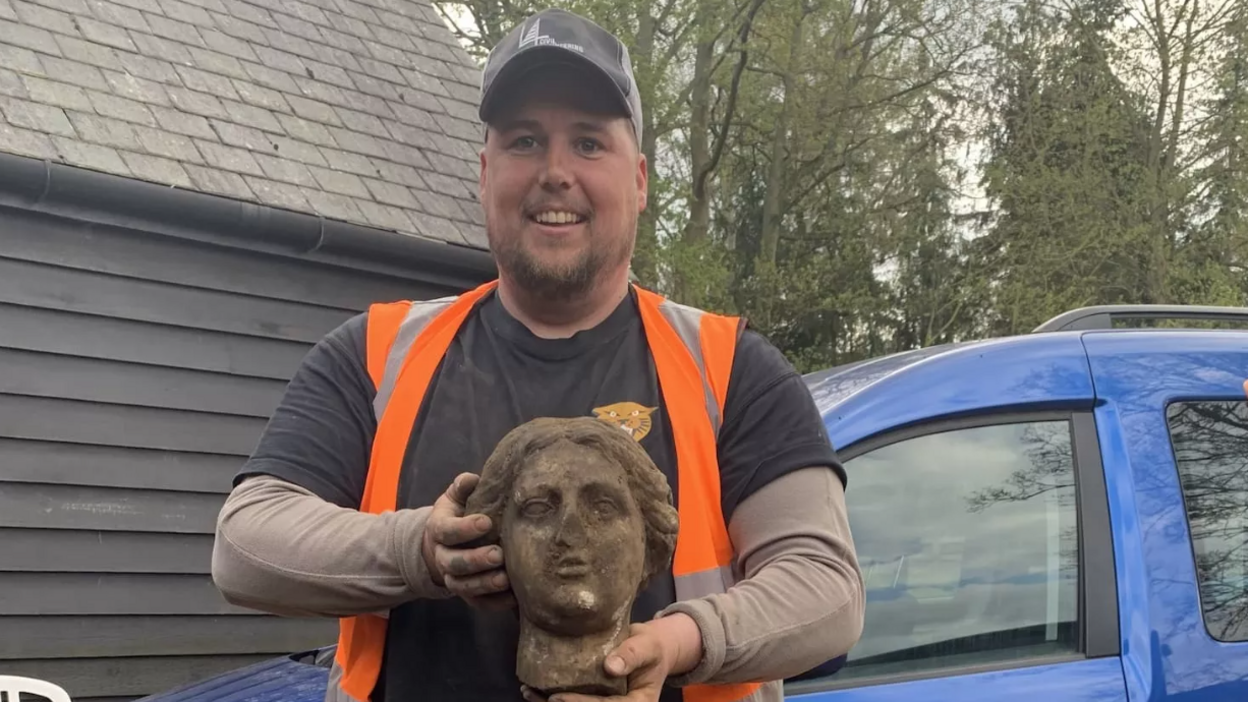
Craig Crawley said the marble head was his "best discovery"
- Published
A digger driver working on a new car park uncovered a Roman statue thought to date back 1,800 years.
Greg Crawley was working at Burghley House, near Stamford, in April 2023 when he noticed a face on an item he thought was a rock.
He had uncovered a marble head, which experts have dated to the First or Second Century.
A bust for the statue was unearthed weeks later. Both are to go on display at the country house later this month.
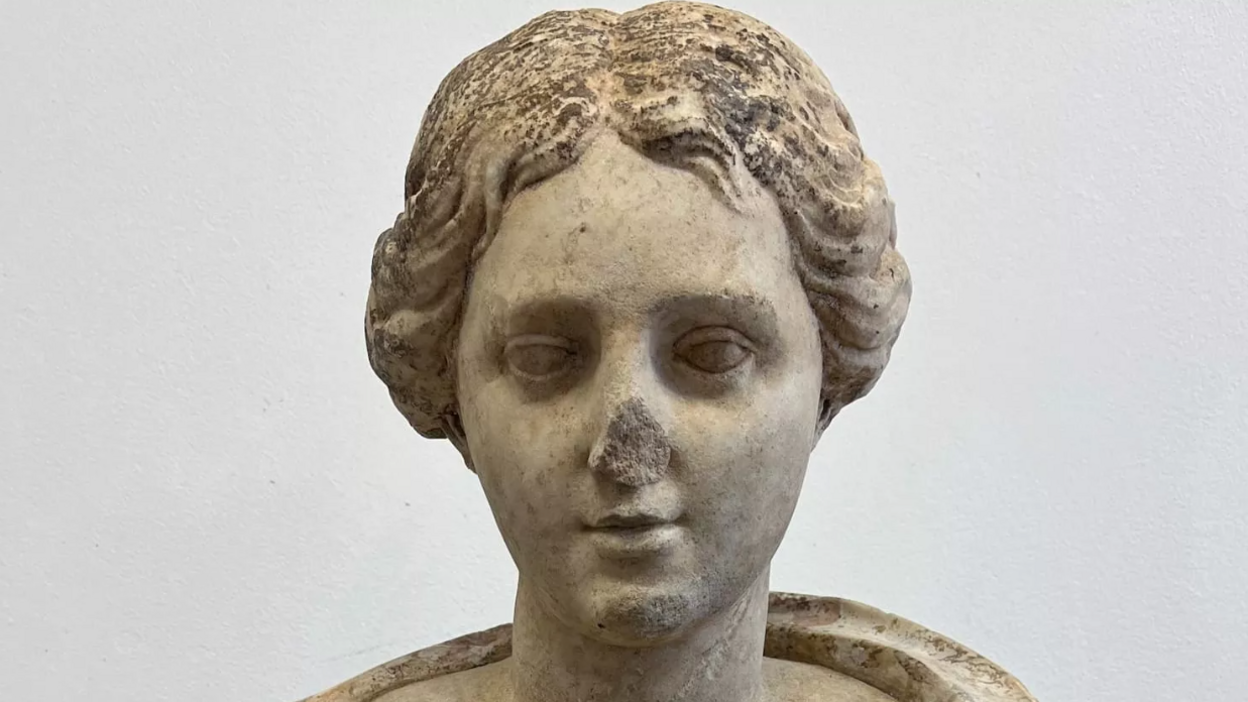
The statue is thought to be 1,800 years old
Mr Crawley said: "I had a real shock as the digger bucket rolled over what I thought was a big stone, to reveal a face.
"When I picked it up, I realised it was a head of a statue. I couldn’t believe it when they told me it was a Roman marble statue.
"It was an amazing feeling to have found something so old and special – definitely my best-ever discovery."
An iron dowel found in the marble head, which probably would have been added in the 18th Century, would have allowed it to be added to a bust or pedestal, experts said.
It was an adaptation often carried out by Italian antique dealers at the time to make excavated ancient relics more attractive to travelling aristocrats.
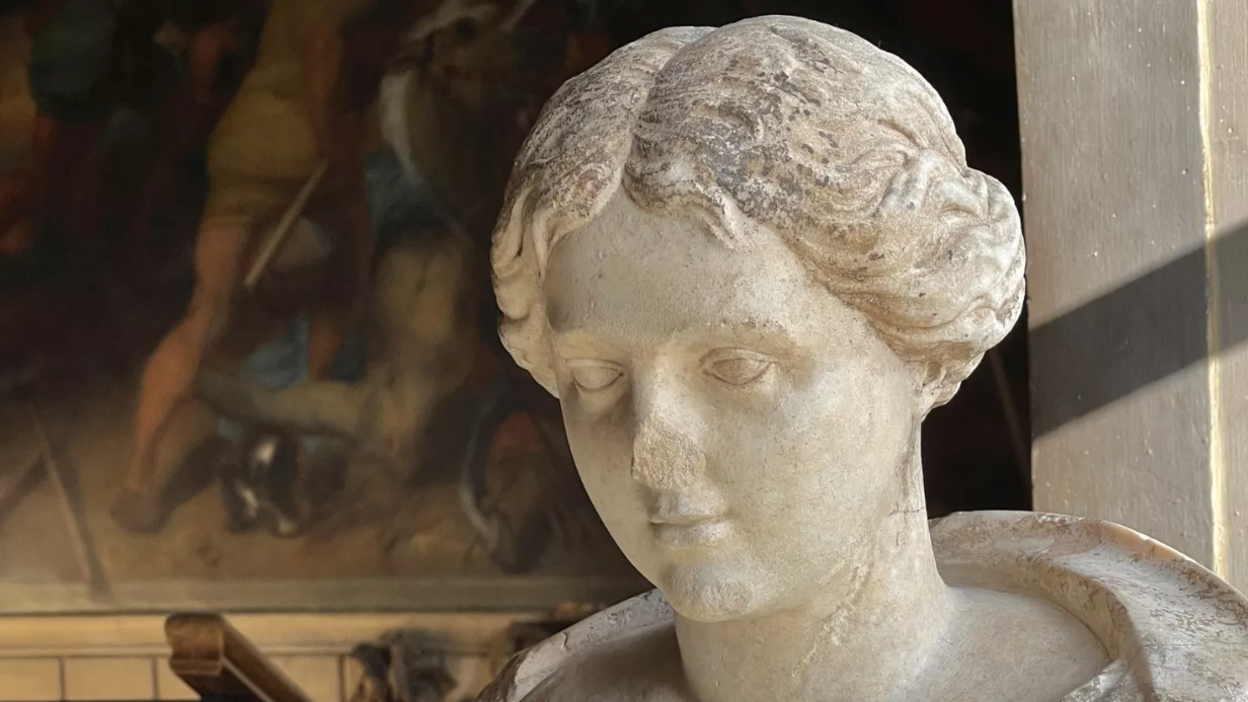
The reconstructed statue will be on display within the Hell Staircase at Burghley House
Burghley House believes the statue may have been bought by the ninth Earl of Exeter, who travelled to Italy twice in the 1760s, bringing back many antiquities for the house.
The house said it remained "a mystery" as to how the bust and marble head became buried.
Several theories have been considered, including a bungled burglary.
It has not been possible to date how long the statue was buried.
A specialist conservator reassembled the statue, which will be on display, alongside an explanation about its discovery, from 16 March.
The find has also been reported to the British Museum.
Follow East of England news on Facebook, external, Instagram, external and X, external. Got a story? Email eastofenglandnews@bbc.co.uk, external or WhatsApp us on 0800 169 1830
Related topics
See Also
- Published7 December 2023
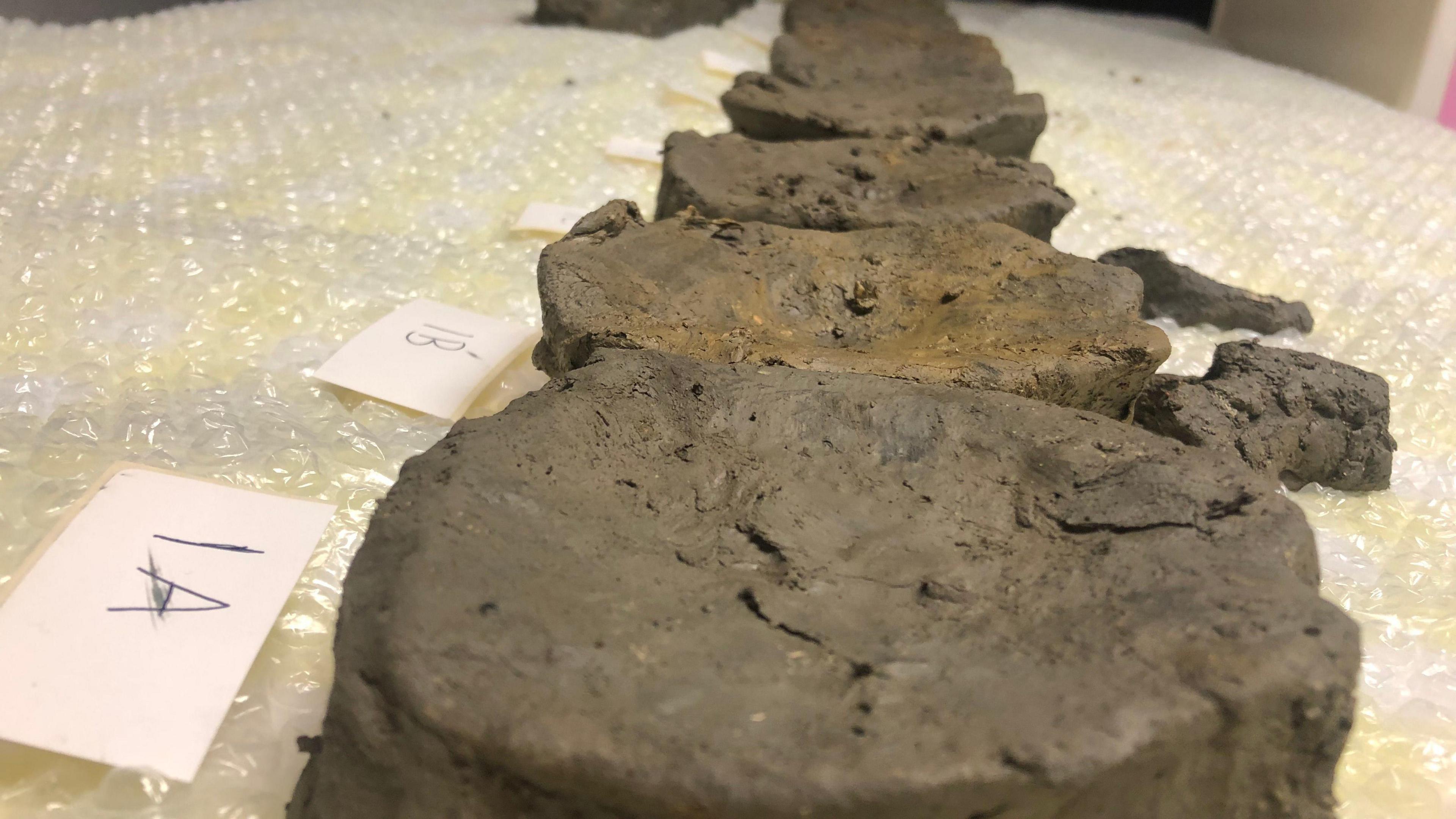
- Published18 July 2023
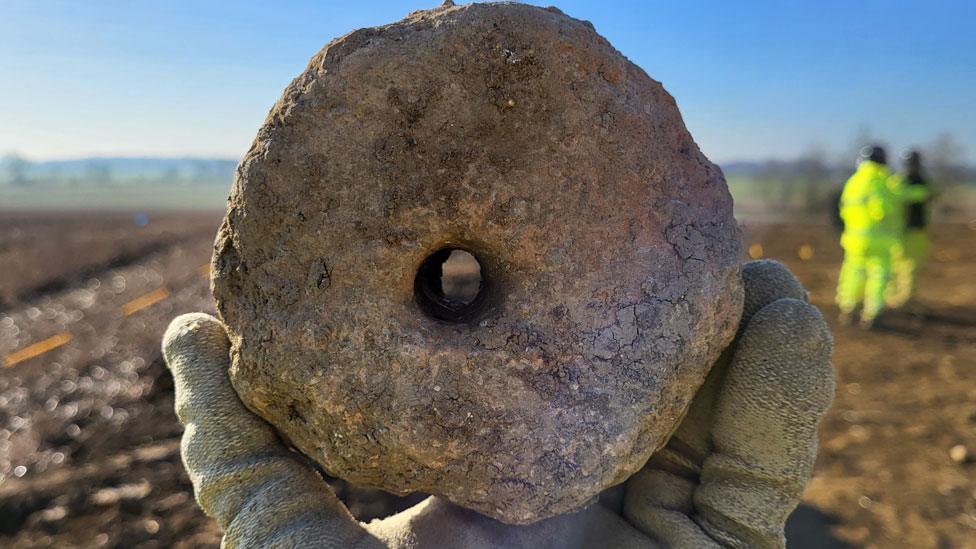
- Published11 February 2024
